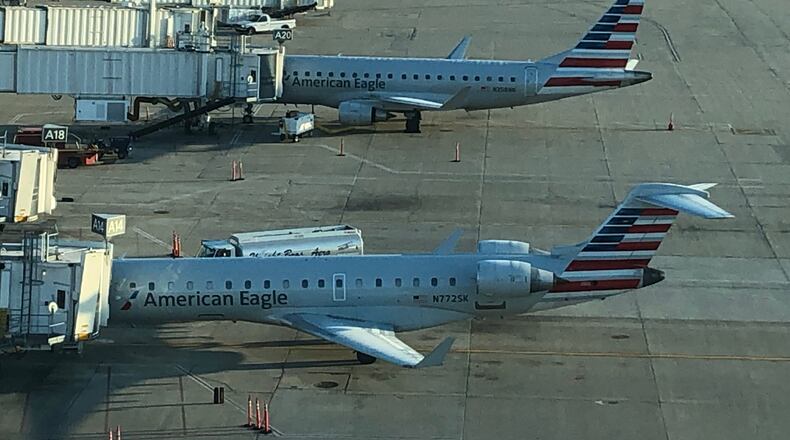“We made a lifesaving move with early action on China,” Trump said. “Now we must take the same action with Europe.”
Here is what is known at this time:
• Airlines are scrambling to adjust to the new restrictions, with many telling customers they were still assessing options and asking for patience from those trying to contact them.
• While Trump said all European travel would be cut off, Homeland Security officials later clarified that the new travel restrictions would apply only to most foreign nationals who have been in the “Schengen Area” at any point for 14 days prior to their scheduled arrival to the United States. The area includes France, Italy, German, Greece, Austria, Belgium and others, and the White House said the zone has the highest number of confirmed COVID-19 cases outside of mainland China.
>> Coronavirus: Complete Coverage
• The restrictions won’t apply to the United Kingdom, and there will be exemptions for “Americans who have undergone appropriate screenings.”
• The restrictions don’t apply to legal permanent residents, immediate family of U.S. citizens or others “identified in the proclamation” signed by Trump.
• The disruptions to air travel are rippling through economies in a blow to hotels, car rental companies, museums and restaurants.
>> Coronavirus call center: A look inside Ohio’s operation in Columbus
• Lucrative business travel was already down sharply because conferences have been canceled and companies have instructed employees to skip all but essential trips. And travel from and within Asia has been restricted for weeks as authorities try to stop the spread of the virus there.
• There are usually about 400 flights a day from Europe to the United States, according to flight tracker FlightAware. Airlines have already been slashing their flight schedules, especially on international routes, to cope with a sharp decline in travel demand among fearful customers.
• About 72.4 million passengers flew from the U.S. to Europe in the year ended last June, making it the most popular international destination, according to Transportation Department figures. About one-third of those passengers fly on U.S. airlines, the rest on foreign carriers. Trump didn’t mention restrictions on Americans traveling to Europe.
> Coronavirus and canceled classes: A list of what local colleges are doing
• Even before Trump’s announcement, the International Airline Travelers Association was forecasting a 24% fall in Europe’s passenger traffic this year and $37 billion in lost potential ticket sales. Italy, which is all but closed off as authorities try to control the spread of the virus there, has been particularly hard hit.
• China is the No. 1 source of foreign tourists for Japan, South Korea and Southeast Asian countries and a growing source of business travel. Airlines canceled thousands of flights. Hotels and other businesses closed.
• With air travel and airline revenue plummeting, airlines are losing their appetite for new planes. On Wednesday, Boeing’s stock fell 18% — its biggest one-day percentage drop since 1974 — and the iconic airplane manufacturer announced a hiring freeze.
About the Author
